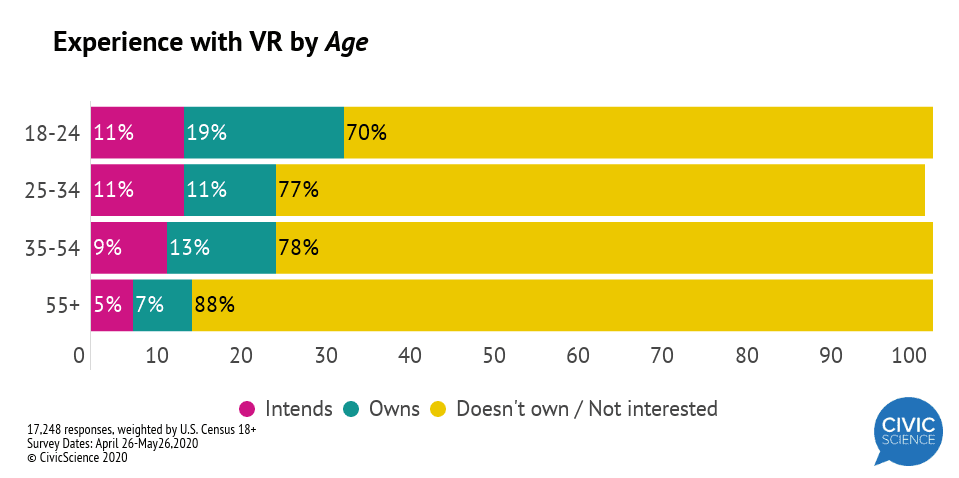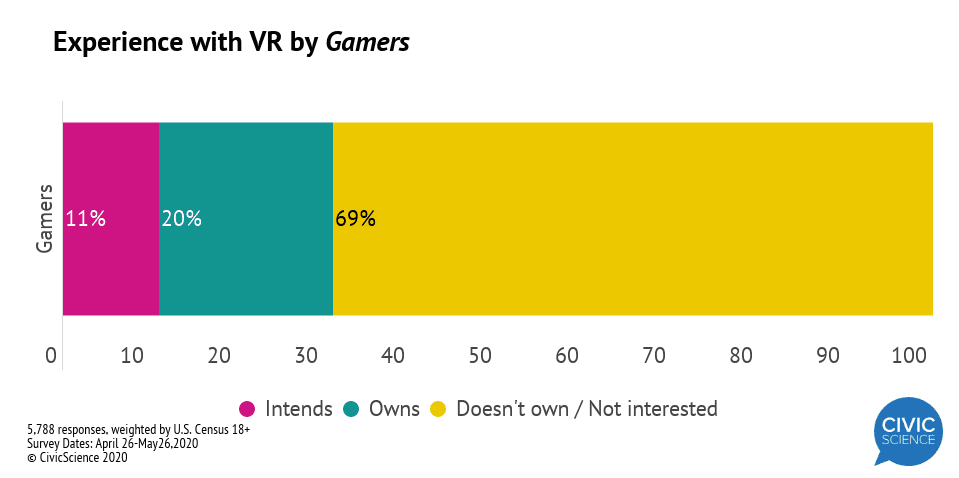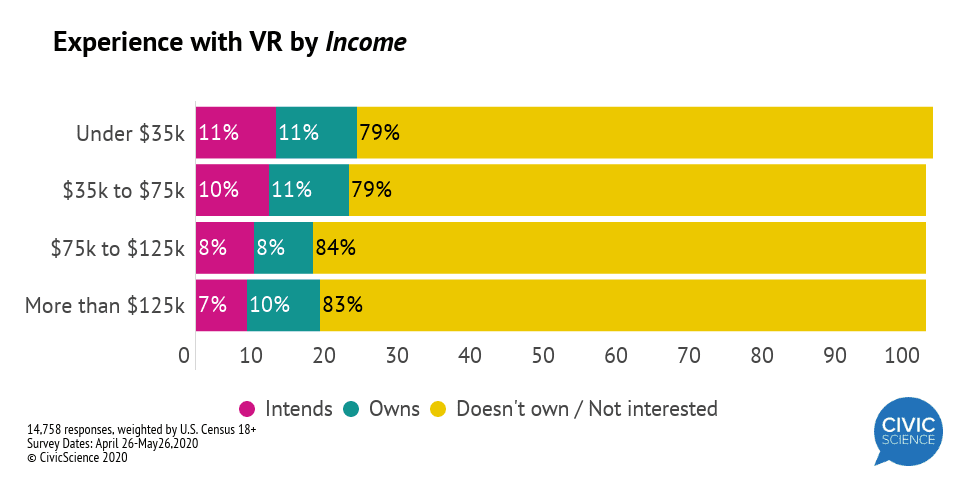CivicScience has been tracking the adoption of VR technology among consumers since 2016. In the age of the coronavirus pandemic and staying indoors, you’d think this would be prime time for at-home experiential technology to boom. But CivicScience data show that VR is a trend that has remained flat since February. As of May to-date numbers, 10% of the adult population reports owning VR and 8% intends to.
In the last 30 days, Gen Z was the most likely to report owning VR technology already. They, along with their Millennial counterparts, are also the most likely to intend to own it.
It should come as no surprise that gamers over-index compared to the gen pop in owning VR technology. While 10% of U.S. adults own a VR headset, gamers are twice as likely to own one already (20% of gamers). While 8% of the adult population intends to purchase VR, a slightly higher 11% of gamers intend to purchase it.
VR technology can cost you anywhere from $100 to $1,000 dollars (or more) for popular models, so you’d think the income bracket of the consumer is surely a huge factor. However, the most ownership and intent come from those making $75K or less a year. This is very likely a proxy for age / life stage, which was shown above. Of course, those in the $125K+ bracket are also very likely to report ownership as well.
Among Best Buy favorables, intent and ownership in the last six months actually under indexes a bit compared to the general population.
While VR appears to have hit a ceiling, at least for right now, CivicScience will continue to track adoption and report on it as it ebbs and flows.
Want to know how favorables of your brand compare to VR adoption and intent? Our clients have access to consumer sentiment and behavioral trends that we don’t publish on our blog. Sign up for a demo to unlock consumer insights you can’t find anywhere else!













